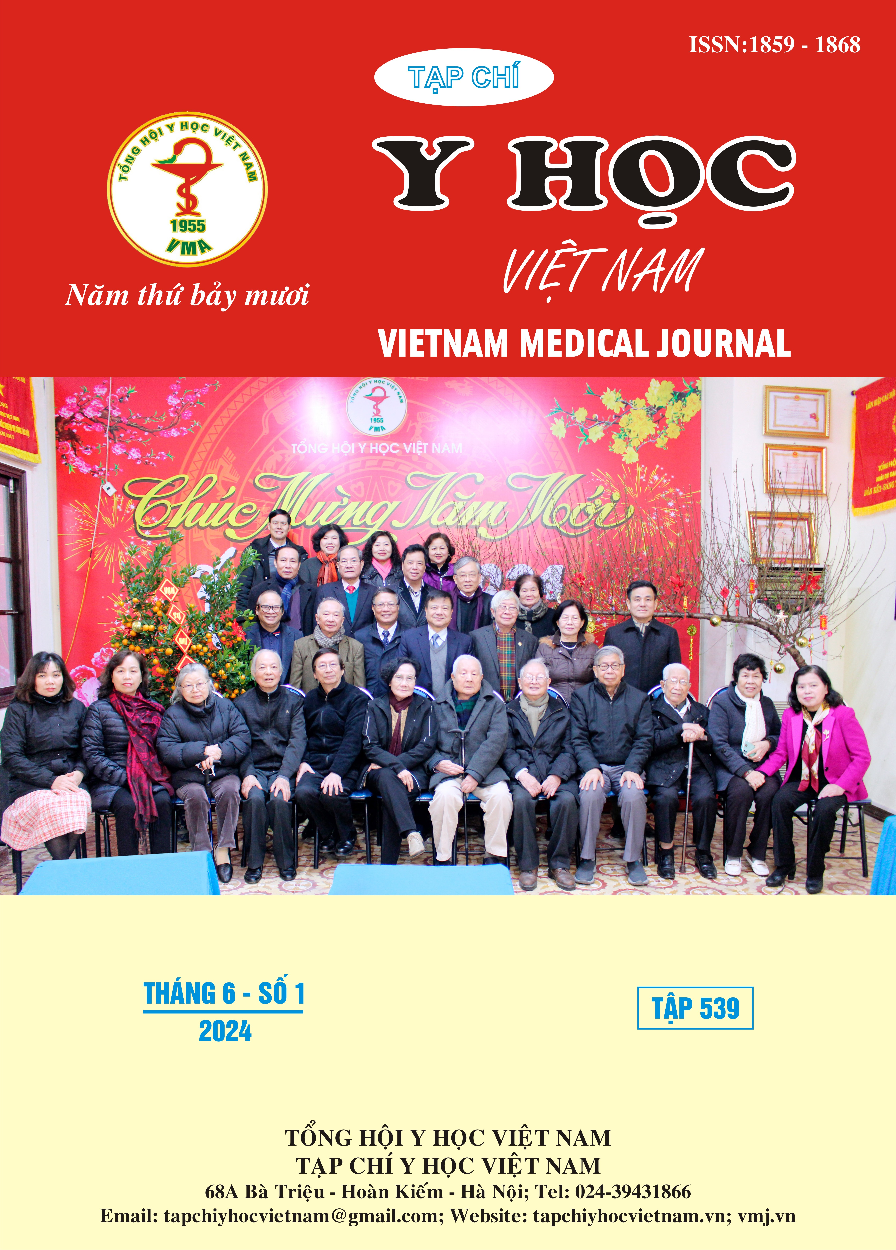SITUATION OF FALLS AMONG OLDER POST-STROKE PATIENTS AT NATIONAL GERIATRIC HOSPITAL
Main Article Content
Abstract
Objective: Describe the status of falls in older patients after stroke at the National Geriatric Hospital. Subjects and methods: A cross-sectional descriptive study on 107 patients ≥ 60 years old diagnosed with stroke and treated at the National Geriatric Hospital from July to November 2021. History of falls, risk of falling, number of falls, fall circumstances, fall location, and post-fall injuries were collected through interviews. Results: The proportion of older post-stroke patients with a history of falls, falls in the past 12 months and falls > 1 time in the past 12 months were 47.7%, 29%, and 13.1%, respectively. The most common fall locations are bedrooms with 45.1%, bathrooms with 38.7%, corridors and outside the road with 6.5%, and stairs with 3.1%. The most common fall situations were loss of balance (38.7%), slipping (32.3%), and dizziness when standing up (16.1%). There were 10 (32.3%) cases without injury after falling. The most common type of injury was soft tissue damage, accounting for 35.5%. Fractures and hospitalization were both recorded in 4 cases (12.9%). Head injuries accounted for the lowest rate at 6.5% (2 cases). 89.7% of participants had a high risk of falling (Timed Up and Go test). Conclusion: The rate of falls, and risk of falling in older post-stroke patients was quite high and has diverse characteristics of fall circumstances, fall locations, and post-fall injuries. Screening for falls and fall risk, thereby providing fall prevention interventions, is essential for this population
Article Details
Keywords
fall, post-stroke, older adults.
References
2. James SL, Lucchesi LR, Bisignano C, et al. The global burden of falls: global, regional and national estimates of morbidity and mortality from the Global Burden of Disease Study 2017. Inj Prev. 2020;26(Supp 1):i3-i11.
3. Batchelor FA, Mackintosh SF, Said CM, Hill KD. Falls after stroke. Int J Stroke. 2012;7(6):482-490.
4. Yew KS, Cheng EM. Diagnosis of acute stroke. Am Fam Physician. 2015;91(8):528-536.
5. Goh HT, Nadarajah M, Hamzah NB, Varadan P, Tan MP. Falls and Fear of Falling After Stroke: A Case-Control Study. PM R. 2016;8(12):1173-1180.
6. Mackintosh SF, Goldie P, Hill K. Falls incidence and factors associated with falling in older, community-dwelling, chronic stroke survivors (> 1 year after stroke) and matched controls. Aging clinical and experimental research. 2005; 17(2):74-81.
7. Lee KB, Lee JG, Kim BJ, et al. The Epidemiology of Fracture in Patients with Acute Ischemic Stroke in Korea. J Korean Med Sci. 2019;34(22):e164. Published 2019 Jun 10. doi:10.3346/jkms.2019.34.e164


